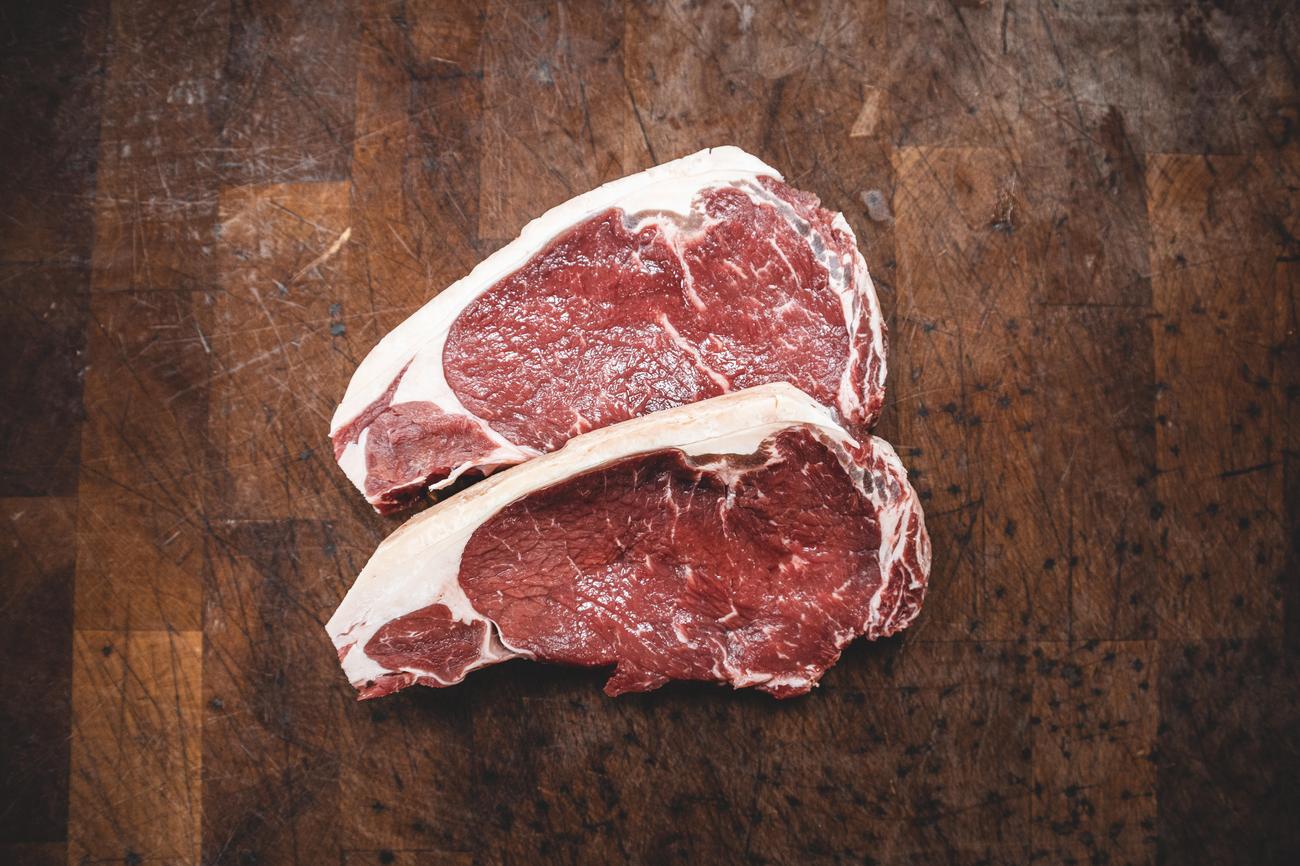Hey, steak lovers! Curious about what makes that cut of meat so special? In this comprehensive guide, we’ll grill into the sizzling truth about steak nutrition, from its protein power to its vitamin content. Get ready to become a true steak connoisseur!

Steak Nutrition Facts
Steak isn’t just a delicious meal—it’s a nutritional powerhouse. Whether you prefer a juicy ribeye or a lean sirloin, understanding the nutritional breakdown of steak can help you make informed choices for a balanced diet.
What Makes Steak So Nutritious?
Steak’s nutrient profile reads like a grocery list for a healthy body. Here’s why it deserves a place at your table:
- Protein Powerhouse: Steak is brimming with protein, crucial for building and repairing tissues, keeping your immune system strong, and producing essential enzymes and hormones.
- Iron Rich: You’ll find an excellent source of heme iron in steak, which your body absorbs more easily than the iron found in plant-based foods. This type of iron aids in oxygen transport, combatting fatigue and boosting energy levels.
- B Vitamins Boost: Steak is a good source of B vitamins, including vitamin B12, niacin, and riboflavin. These vitamins are essential for energy production, cognitive function, and cellular metabolism.
- Zinc for Immunity: Steak provides a healthy dose of zinc, a mineral that acts as a powerful antioxidant and supports a robust immune system, helping your body ward off infections.
Steak Cuts: A Nutritional Comparison
Not all steaks are created equal in the nutrition department. Here’s a quick comparison of popular cuts (based on a 3-ounce cooked serving):
| Steak Cut | Calories | Protein (grams) | Fat (grams) |
|---|---|---|---|
| Tenderloin (Filet Mignon) | 175 | 26 | 8 |
| Sirloin | 180 | 28 | 8 |
| Ribeye | 230 | 24 | 16 |
| New York Strip | 210 | 25 | 14 |
| T-Bone | 220 | 26 | 15 |
| Flank Steak | 210 | 27 | 12 |
| Skirt Steak | 190 | 26 | 11 |
Important Note: These values are approximate. The actual nutritional content of your steak can vary based on the cut, grade of beef, and cooking method.
Steak and Your Health: Finding the Balance
While steak bursts with nutrients, it’s wise to be mindful of its fat content, especially saturated fat. Consuming excessive amounts of saturated fat has been linked to an increased risk of heart disease.
Here’s how to enjoy steak in a heart-healthy way:
- Leaner Cuts Are Your Friend: Opt for cuts like sirloin, tenderloin, and flank steak to savor the flavor and nutrients with less saturated fat.
- Portion Control Is Key: Stick to recommended serving sizes (around 3 ounces) to keep your intake moderate.
- Cooking Methods Matter: Grilling, broiling, or pan-frying without added fat are healthier cooking methods than deep-frying.
Making Steak Part of a Healthy Diet
Here are some tips for fitting steak into your balanced lifestyle:
- Balance is Best: Enjoy steak alongside plenty of fruits, vegetables, whole grains, and healthy fats.
- Listen to Your Body: Pay attention to how you feel after eating steak. Some people are more sensitive to red meat and might need to adjust their intake.
- Talk to Your Doctor: If you have concerns about red meat consumption, consult your doctor or a registered dietitian. They can provide personalized recommendations based on your health history and needs.
Exploring the World of Steak: A Culinary Adventure
Steak isn’t just fuel; it’s an experience! Don’t hesitate to try different cuts, marinades, and cooking methods. Remember, proper cooking temperature is crucial for both safety and flavor!
The Takeaway: Steak can be a delicious and nutritious part of a healthy diet when enjoyed in moderation and as part of a balanced eating plan. Fire up the grill, savor the flavor, and enjoy the nutritional goodness!
How Healthy is Eating Steak?
We’ve covered the basics of steak nutrition, but let’s delve deeper into its impact on your health. Steak presents a bit of a paradox: it’s a nutritional goldmine containing protein, iron, zinc, and B vitamins, but it can also be high in saturated fat.
Think of protein as the building block for your body’s tissues, and iron as the delivery system for oxygen in your blood. These nutrients are essential for maintaining energy levels, supporting muscle growth and repair, and ensuring proper bodily functions.
The good news is that by choosing leaner cuts like eye of round, top sirloin, and flank steak, you get the nutritional benefits without overdoing it on unhealthy fats.
How you cook your steak matters, too! Grilling or roasting without excess fat is a healthier approach compared to frying.
Moderation and a Balanced Diet
Most health experts agree that enjoying steak in moderation as part of a balanced diet is perfectly acceptable for most people. The American Heart Association suggests limiting red meat intake, including steak, to around 6 ounces or less per week.
Remember, a balanced meal includes a variety of foods. Pair your steak with nutrient-rich options like colorful veggies, fresh salads, and whole grains for a satisfying and wholesome meal.
The Evolving World of Nutrition Science
Research on nutrition is constantly evolving. Scientists continue to make new discoveries about the impact of food on our health. Stay curious and keep up with the latest findings on steak and other foods to make informed decisions about your diet.
Important: This information is for general knowledge and shouldn’t replace personalized advice from your doctor or a registered dietitian.
What is the Nutritional Value of 100g of Steak?
Let’s break down the nutritional content of a typical 100g serving of steak:
- Calories: Around 251 calories, largely due to its fat content.
- Fat: About 55% of the calories in 100g of steak come from fat.
- Protein: An impressive 25 grams of high-quality protein.
For a lower-calorie option, consider flank steak, which contains approximately 192 calories per 100g serving.
Remember that different cuts of steak, like tri-tip, chuck eye, and ribeye, will have varying calorie counts and nutritional profiles.
The fascinating thing about nutrition research is its constant evolution. There’s much more to discover about how cooking methods, specific cuts, and even the cow’s diet can influence the final nutritional content of your steak. Be sure to keep exploring!
Is Steak More Nutritious Than Chicken?
The age-old debate of steak versus chicken continues! When it comes to pure vitamin and mineral content, steak takes the crown. It boasts higher amounts of vitamin B12, zinc, iron, and selenium compared to chicken. These nutrients are vital for maintaining healthy blood cells, supporting a strong immune system, and regulating thyroid function.
Both steak and chicken are excellent sources of protein. However, steak’s rich flavor and melt-in-your-mouth texture stem from its higher fat content, resulting in a higher calorie count.
Don’t despair, steak lovers! Choosing lean cuts and using healthy cooking methods like grilling or roasting can help manage your calorie and fat intake. You can enjoy a delicious and nutritious steak without the guilt!
Here’s a quick summary:
- Steak: The Micronutrient Champion: It boasts a greater concentration of essential vitamins and minerals than chicken.
- Calorie Content: Steak tends to be more calorie-dense due to its fat content, but leaner cuts and healthy cooking methods can mitigate this.
- Lean Steak: A Nutritional Powerhouse: Don’t underestimate a good lean steak! It can provide a similar nutritional punch to chicken breast, offering high-quality protein and vital micronutrients.
Want to explore further?
Nutritional science is always evolving. If you’d like to dive deeper, consult a registered dietitian or your healthcare provider for personalized advice based on your health goals.
Is Steak a Fat or Protein?
The answer to whether steak is primarily fat or protein isn’t a simple yes or no.
Protein Powerhouse:
Steak is a fantastic source of protein, containing roughly 26 grams per 100-gram serving. This amount significantly contributes to your body’s need for building and repairing tissues, supporting muscle growth, and maintaining overall function.
Fat Content: A Tale of Different Cuts
The fat content in your steak largely depends on the cut. For instance:
- Flank steak, a leaner cut, has about 13 grams of fat per 100 grams.
- Ribeye, known for its rich marbling, contains approximately 22 grams of fat for the same serving size.
Finding the Fat-to-Protein Sweet Spot
Balancing fat and protein intake is essential for healthy eating. The American Heart Association advises limiting red meat to a maximum of 6 ounces per week.
To enjoy steak while managing fat intake:
- Be mindful of portion sizes.
- Opt for leaner cuts like flank steak, strip steak, or top sirloin.
- Choose healthier cooking methods like grilling or roasting over frying.
Let’s Recap: What You Need to Know About Steak
- Protein Powerhouse: Steak excels as a protein source, with about 26 grams per 100 grams.
- Fat Factors: The cut of steak determines its fat content. Leaner options like flank steak have less fat than ribeye.
- Moderation is Key: Enjoy steak as part of a healthy diet by practicing moderation, choosing leaner cuts and healthy cooking methods.
- Variety is Vital: Balance steak dinners with other protein sources, plenty of fruits, vegetables, and whole grains.
How Often Is It OK to Eat Steak?
Steak is undeniably delicious, but how often can you indulge without derailing your health goals? Finding the right balance is key!
While steak offers valuable nutrients like iron and B vitamins, it can be high in saturated fat. Aiming for once or twice a week is a reasonable guideline.
Making Healthy Choices:
- Choosing leaner cuts like sirloin or flank steak helps manage saturated fat intake.
- Opting for grilling or roasting over frying is a heart-healthy choice.
- Building a balanced plate means filling it with colorful veggies, whole grains, and other nutritious foods alongside your steak.
Remember:
- Nutritional science is constantly evolving, and research on red meat continues to provide new insights.
- Factors like your overall diet, health goals, and personal preferences can influence how often you choose to eat steak.
- Consulting a doctor or registered dietitian is always recommended for personalized advice tailored to your individual health needs and goals.
Here’s a quick guide to consider:
| Factor | Impact on Steak Consumption |
|---|---|
| Overall Diet | Influences frequency; balance is important. |
| Health Goals | Impacts portion size and frequency. |
| Personal Preferences | Plays a role in enjoyment. |
Are Steaks Junk Food?
The question of whether steaks deserve a spot on the “junk food” list requires a nuanced answer. Steak, in its unprocessed form, is a nutrient-dense food offering protein, iron, and various vitamins and minerals.
However, the way we prepare and consume steak significantly impacts its healthfulness. A well-marbled ribeye, while delicious, is higher in saturated fat, which, in excess, can lead to health problems.
The key is making informed choices:
- Leaner Cuts: Opt for cuts like tri-tip or Delmonico, which offer a healthy balance of protein and nutrients without excessive saturated fat.
- Healthy Cooking Methods: Choose grilling or roasting over frying to avoid adding unnecessary fats.
- Moderation: Enjoy steak in moderation as part of a balanced diet filled with fruits, vegetables, whole grains, and other protein sources.
Here’s a quick look at the fat and protein content of various cuts:
| Steak Cut | Fat Content (per 3 oz serving) | Protein Content (per 3 oz serving) |
|---|---|---|
| Ribeye | Around 15-20 grams | Around 20-25 grams |
| Tri-tip | Around 8-12 grams | Around 25-30 grams |
| Delmonico | Around 10-15 grams | Around 20-25 grams |
Steak, enjoyed mindfully, can be a part of a healthy diet. It’s about making smart choices to maximize its benefits. For personalized dietary guidance, consult a registered dietitian or your healthcare provider.
What Is the Healthiest Meat to Eat?
When considering the healthiest meat options, steak holds a mixed position. While it offers a wealth of nutrients, it’s essential to understand its pros and cons.
Steak’s Nutritional Highlights:
- Protein Power: Steak is an excellent source of complete protein, essential for building and repairing tissues, much like a construction crew for your body.
- Iron for Energy: Steak provides heme iron, which your body easily absorbs, helping prevent anemia and maintain energy levels.
- Zinc for Immunity: The zinc in steak acts as a powerful antioxidant, supporting a healthy immune system.
- B Vitamins and More: Steak also contains B vitamins for energy production, selenium for cell protection, and creatine for muscle function.
The Importance of Cut and Cooking Method:
- Leaner is Better: Choosing “lean” or “extra-lean” cuts like eye of round, top sirloin, or flank steak helps manage your fat and calorie intake.
- Trim Visible Fat: Before cooking, remove any excess fat to reduce saturated fat consumption.
- Healthy Cooking: Grilling and roasting without added fats are healthier options than frying.
Moderation and Recommendations:
- Dietary Guidelines: The Dietary Guidelines for Americans recommend a weekly intake of no more than 26 ounces of meat, poultry, and eggs combined.
- Balanced Approach: Moderation is key when incorporating any red meat, including steak, into your diet.
Exploring Healthier Red Meat Alternatives:
- Kangaroo: This lean meat is incredibly nutrient-dense, low in fat and saturated fat, and high in iron.
- Venison: Similar to kangaroo in its nutritional profile, venison is a good source of iron and protein.
- Bison: Bison offers a leaner alternative to beef, with less fat and calories while being rich in protein and iron.
Remember, steak can be part of a healthy diet when chosen and prepared mindfully. For personalized guidance on incorporating meat into your diet, consult a registered dietitian or your doctor.
What Is the Healthiest Steak to Eat?
Navigating the world of steak can be tricky when trying to make healthy choices. The key is to prioritize leaner cuts and enjoy fattier options in moderation.
Healthy Steak Superstars
These cuts are naturally leaner, making them excellent sources of protein and essential nutrients without excessive saturated fat:
- Top Sirloin: This cut offers a great balance of flavor and leanness. It’s a crowd-pleaser that cooks beautifully on the grill or in a pan.
- Bottom Round Roast: Don’t let the name fool you! This cut can be sliced into delicious steaks. It’s incredibly lean and boasts a good amount of selenium, an antioxidant.
- Flank Steak: This cut requires a bit more attention during cooking (cook it quickly over high heat or marinate it to tenderize the meat). It’s super flavorful and ideal for fajitas or stir-fries.
Moderation with Fattier Cuts
While flavorful, these cuts are higher in fat and calories and are best enjoyed occasionally:
- Ribeye Steak: While delicious, ribeye is higher in saturated fat and should be consumed in moderation.
- T-bone Steak: Similar to ribeye in its fat content, T-bone steak is another cut best enjoyed occasionally.
Here’s a quick reference guide:
| Steak Cut | Leanness | Notes |
|---|---|---|
| Top Sirloin | Lean | Good balance of flavor and leanness. |
| Bottom Round | Very Lean | Can be roasted or sliced into steaks; good source of selenium. |
| Flank Steak | Lean | Needs to be cooked quickly over high heat or marinated. |
| Ribeye Steak | Fatty | Higher in fat and calories; best enjoyed in moderation. |
| T-bone Steak | Fatty | Similar to ribeye in fat content. |
Remember: Nutritional science is ever-evolving! Experiment with different cuts, cooking methods, and portion sizes to discover what fits best with your dietary needs and preferences.
Is Steak Good for Building Muscle?
If you’re looking to gain muscle, steak can be your best friend! Here’s why:
- Protein Powerhouse: Steak is bursting with protein, the essential building block for muscle growth and repair. A 3-ounce serving can provide around 25 grams of protein, a significant portion of your daily needs.
- Leaner Cuts for Optimal Gains: Choosing leaner steak options helps maximize protein intake while minimizing unnecessary fat and calories.
- Iron for Oxygen Delivery: Steak is an excellent source of iron, which is crucial for transporting oxygen to your muscles, allowing them to work efficiently during workouts.
- Zinc for Repair and Recovery: Zinc, another nutrient found in steak, plays a vital role in repairing those tiny muscle tears that occur during exercise, promoting faster recovery.
- B Vitamins for Energy: Steak’s B vitamins are crucial for converting food into energy, giving your muscles the fuel they need to power through workouts.
- Creatine Boost: Steak naturally contains creatine, a compound that can enhance muscle strength and power.
To maximize your muscle-building potential:
- Prioritize Lean Cuts: Opt for top sirloin, flank steak, or other lean options to fuel your muscles efficiently.
- Combine with Exercise: Pair your steak consumption with a consistent exercise routine to stimulate muscle growth and strength.
- Consider Grass-Fed Steak: Grass-fed steak tends to be higher in protein and contains a healthier fat profile compared to grain-fed steak.
Important Note: While this information offers a great starting point, consulting a healthcare professional or registered dietitian is crucial for personalized dietary advice tailored to your unique needs and fitness goals.
Is Steak Healthier Than Vegetables?
The debate between steak and vegetables isn’t about declaring a winner. Both offer unique nutritional benefits, and a balanced diet requires both.
Steak: Protein and Essential Nutrients
- Protein Powerhouse: Steak is an excellent source of high-quality protein, crucial for building and repairing tissues, maintaining healthy blood sugar levels, and promoting satiety.
- Iron for Energy and Focus: Steak provides heme iron, which is easily absorbed and plays a vital role in oxygen transport, preventing fatigue and supporting cognitive function.
- Zinc for Immunity and More: Zinc in steak acts as an antioxidant, supporting a robust immune system and aiding in cell growth and repair.
- B Vitamins for Energy Production: Steak contributes important B vitamins, essential for energy production, nerve function, and maintaining healthy skin and hair.
Vegetables: Vitamins, Minerals, and Fiber
- Vitamin and Mineral Richness: Vegetables are abundant in various vitamins and minerals, including vitamins A, C, K, folate, potassium, and magnesium.
- Antioxidant Power: Many vegetables are packed with antioxidants, which protect your cells from damage caused by free radicals.
- Fiber for Digestive Health: Vegetables are excellent sources of fiber, which is vital for digestive health, promoting regularity, and maintaining a healthy weight.
Finding the Balance for Optimal Health
- Enjoy Both: Instead of viewing it as a competition, incorporate both steak and vegetables into your diet.
- Moderation is Key: Enjoy steak in moderation, choosing leaner cuts and healthy cooking methods.
- Fill Your Plate with Vegetables: Aim to fill half your plate with vegetables at most meals to benefit from their abundant vitamins, minerals, and fiber.
Important Considerations:
- Cut and Cooking Matter: The nutritional value of steak can vary depending on the cut and cooking method. Choose leaner cuts and grilling or roasting over frying.
- Listen to Your Body: Pay attention to how your body feels after eating different foods and adjust your diet accordingly.
- Consult a Professional: It’s always a good idea to talk to a registered dietitian or your healthcare provider for personalized dietary advice.
Conclusion
Steak, when enjoyed thoughtfully, can be a delicious and nutritious part of a balanced diet. By understanding the different cuts, nutritional content, and cooking methods, you can savor your steak while prioritizing your health. Remember, a holistic approach to nutrition involves incorporating various foods, including plenty of fruits, vegetables, whole grains, and lean protein sources, like certain cuts of steak!
Steak is not only a delicious meal, but it also provides a plethora of nutritional benefits. If you’re curious about the nutrition facts surrounding steak, you’re in luck! Our comprehensive guide will give you all the information you need. From the protein content to essential vitamins and minerals, you’ll discover why steak is a great addition to your diet. So, if you’re ready to dive into the world of nutrition facts about steak, click here to explore more: nutrition facts about steak. Happy reading!
- China II Review: Delicious Food & Speedy Service - April 17, 2025
- Understand Virginia’s Flag: History & Debate - April 17, 2025
- Explore Long Island’s Map: Unique Regions & Insights - April 17, 2025
















